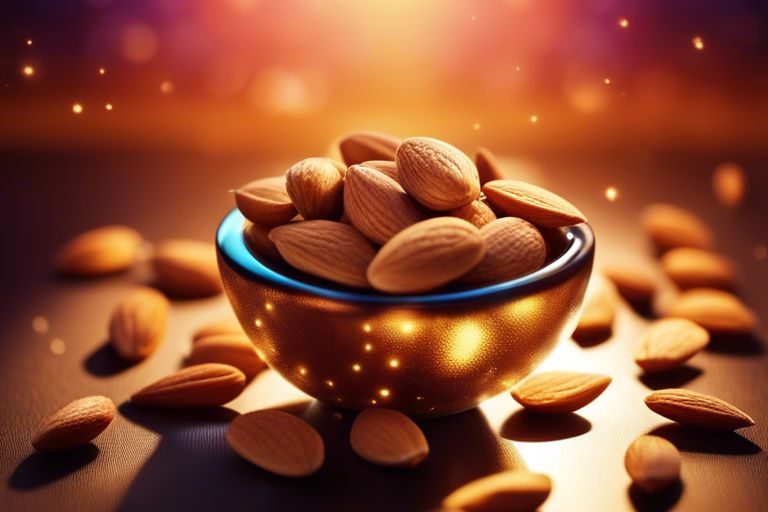
You’ve probably heard the buzz about the Paleo diet, but what’s it all about? Imagine eating like our ancestors did thousands of years ago – fresh, whole foods free from additives and artificial ingredients. Sounds liberating, right?
You’re not alone in your curiosity. This guide will take you on a journey back in time as we uncover the principles of this age-old dietary plan. We’ll delve into what foods are embraced, which ones to sidestep, and why it might be beneficial for you.
Perhaps you’re seeking weight loss solutions or grappling with health conditions; either way, the Paleo lifestyle could hold answers you’ve been searching for. But remember, everyone’s body is unique – what works wonders for one person might not suit another.
So buckle up! Let’s explore how adopting a Paleo diet could potentially free your body from modern ailments and lead to a healthier you.
Key Takeaways
- Mimics physical activities of ancient ancestors
- Rich in proteins and healthy fats for longer satiety
- 80% of immune system located in the gut
- Paleo Shopping Strategies: Shop the perimeter of the store where fresh produce is located.
Understanding the Paleo Diet Principles
You’ve likely heard about the Paleo diet, but do you really understand its core principles? Let’s dive in and unravel this popular eating plan together.
At its heart, the Paleo diet is about returning to how our prehistoric ancestors ate. It emphasizes whole foods, lean proteins, fruits, vegetables, and healthy fats while avoiding processed foods and grains.
One of the most common Paleo misconceptions is that it’s all about meat consumption. In reality, balance is key here; a variety of plant-based foods are just as important for maintaining diet sustainability.
Now you might be questioning: Is it realistic to adhere to such a regimen today? The answer lies within each individual’s commitment to their health goals. Yes, it may seem challenging at first glance due to our modern food environment full of processed options. However, the beauty of the Paleo approach lies in its flexibility – there isn’t one ‘right’ way to do it. You can tailor your dietary choices according to your lifestyle needs.
Curious about how this unique dietary approach came into existence? Let’s delve deeper into its historical background in our next section.
Historical Background
Delving into the past, it’s fascinating to see how our ancestors thrived on a regimen of whole foods, which forms the foundation for this popular modern eating plan. This approach to nutrition and health is often referred to as the Paleo Diet, based on ancient nutrition practices of prehistoric humans.
The hunter-gatherer lifestyle was prevalent during the Paleolithic era. People then depended heavily on a diet composed of lean meats, seafood, fresh fruits, vegetables, seeds and nuts – all foods that can be hunted or gathered. They didn’t have access to what we now consume as processed food.
Historical evidence suggests this type of diet helped our ancestors to stay healthy and physically fit. It’s believed they were less likely to suffer from obesity or chronic diseases that are common in today’s society like diabetes and heart disease.
This isn’t about being overly restrictive; rather it encourages you to make mindful choices about your food intake while allowing room for flexibility based on individual needs and preferences. As you move forward in exploring these guidelines further, you’ll find that understanding what constitutes ‘paleo-friendly’ foods will become increasingly clear.
What You Can Eat
Let’s dive right into the delicious details of what you can enjoy on this ancient nutrition plan. The paleo diet is all about going back to our roots, literally, by consuming foods that our ancestors had access to thousands of years ago.
Embracing the Paleo lifestyle means you’ll feast on:
- Protein-rich foods like grass-fed meats and wild-caught fish
- Fresh fruits and vegetables, particularly those available seasonally
- Nuts and seeds for a crunchy snack or meal addition
- Healthful fats from avocado, olive oil, or coconut
With these basics in mind, meal planning becomes a creative process where you can mix and match ingredients based on your preference. Remember, seasonal eating is key in Paleo. It not only brings variety to your meals but also ensures optimum nutrition.
Every person is unique; therefore, your journey with the Paleo diet will be too. Don’t be afraid to experiment with different nutrient-dense foods that are within the guidelines yet suitable for your individual needs.
Now that we’ve explored what delights await you on this food journey, it’s time we shifted focus towards identifying certain items which may require caution or complete avoidance while following this way of life.
What to Avoid
When following a prehistoric-inspired lifestyle, it’s important to avoid certain food items that were not part of our ancestors’ menu. The paleo diet specifically eliminates processed foods, refined sugars, and grains. Dairy products are also generally excluded due to the lack of domesticated animals during the Paleolithic era.
To fully embrace this way of eating, it’s essential to find dairy alternatives. Almond milk or coconut cream can be used as replacements for cow’s milk in recipes or as a coffee creamer. Instead of cheese, nutritional yeast can provide a similar flavor profile with added health benefits.
In addition, finding grain substitutes is crucial when following the paleo path. Replace traditional wheat pasta with spiralized vegetables or spaghetti squash. Substitute rice with quinoa and use almond flour instead of wheat-based flours in baking.
It’s important to remember that this lifestyle change is not about deprivation, but rather about rethinking your approach to food choices in favor of nutrient-dense options that fuel your body optimally. While these changes may initially seem challenging, over time they become natural adjustments that empower you to take control of your nutrition.
Next up, let’s explore the many health advantages offered by adopting a paleo lifestyle!
Benefits of the Paleo Diet
Adopting the paleo diet has numerous health advantages, which we will now explore. The Paleo diet isn’t just another fad but a lifestyle with tangible benefits.
- Improved Weight Management: By focusing on protein-rich, unprocessed foods, you might find it easier to maintain or lose weight without feeling hungry all the time.
- Enhanced Gut Health: Consuming fresh fruits and vegetables can help improve your gut health due to their high fiber content.
- Paleo Performance Boost: The elimination of processed foods and sugars may increase energy levels and enhance physical performance.
- Diet Sustainability: With its emphasis on whole foods, this diet discourages overeating and encourages healthier eating habits long-term.
Research supports these benefits—though individual experiences vary—and highlights potential improvements in heart health too. You’ll likely feel more satiated after meals due to the high protein and healthy fat intake while enjoying a variety of colorful fruits, veggies, nuts, and seeds.
Without diminishing these merits, though, there’s a need for us to address some challenges that come with adopting this dietary regimen fully. As we transition into the next section about ‘potential challenges and criticisms,’ remember that every dietary choice involves trade-offs that should be carefully considered based on personal needs and preferences.
Potential Challenges and Criticisms
While the perks of this ancient-inspired eating regimen are enticing, it’s not all sunshine and rainbows; there exist some hurdles and criticisms that can’t be ignored. For starters, let’s talk about cost implications. Paleo diet necessitates more fresh produce and lean meats which might spike your grocery bills.
Here’s a quick comparison for you:
| Non-Paleo | Average Cost | Paleo | Average Cost |
|---|---|---|---|
| Processed Foods | $3-$5 per meal | Fresh Fruits & Vegetables | $5-$8 per meal |
| Fast-food Meal | $5-$7 per meal | Lean Meats & Fish | $10-$15 per meal |
| Soda Drinks | $1-$2 per bottle | Natural Juices & Herbal Tea | $3-$4 per bottle |
Another criticism is sustainability concerns. The increase in demand for meat could lead to overfarming and environmental distress. Always remember, even though paleo promotes freedom from processed foods, individual dietary needs differ greatly.
So, while the paleo diet has many benefits, it’s essential to assess these challenges before making any significant lifestyle changes. As we venture further into discussing the paleo lifestyle, we’ll explore how you can navigate these potential pitfalls with ease.
Adapting to the Paleo Lifestyle
Embracing this new approach to eating might seem daunting at first, but remember it’s not just about the food on your plate, it’s more about making a long-term commitment towards a healthier you. The Paleo lifestyle goes beyond diet; incorporating effective Paleo exercise routines can work wonders too. By combining high-intensity interval training and weightlifting, you’ll be mimicking the physical activities of our ancient ancestors in no time.
You don’t have to give up socializing over meals either! Plenty of Paleo friendly restaurants are popping up everywhere, offering delicious and wholesome options that align perfectly with your new dietary plan. Remember, adapting to this lifestyle doesn’t mean sacrificing enjoyment or freedom; it’s simply choosing better for yourself.
Each person’s journey into the Paleo lifestyle is unique and requires individualized planning based on their specific health needs and goals. Always listen to your body and adjust accordingly—you’re in control here.
Making these changes could lead to significant improvements in your overall well-being—including potential weight loss, which we’ll dive deeper into next—proving that adopting the Paleo lifestyle offers more than just immediate gratification; it’s an investment in long-term health success.
Paleo Diet and Weight Loss
Shedding those stubborn pounds might just be a delightful side effect of this transformative lifestyle switch, but it’s about so much more—it’s about feeling empowered, energized, and truly alive! Following the Paleo diet isn’t merely about losing weight; it creates an avenue to better health and improved emotional well-being.
- The Paleo diet is rich in proteins and healthy fats, keeping you satiated longer.
- Essential nutrients from fruits and vegetables boost your metabolism.
- Regular paleo exercise routines help maintain muscle mass while shedding fat.
Weight loss on the Paleo diet isn’t a one-size-fits-all approach. It respects individual dietary needs and preferences. You’re encouraged to focus on nutrient-dense foods that work best for your body. This personalized approach makes it easier to stick with long-term—no deprivation or hunger pangs involved!
The emotional impact of this dietary change can’t be overstated either—you’ll feel more confident as you take control of your food choices. This newfound empowerment often leads to other positive changes like increased activity levels or better sleep habits.
As we journey deeper into the Paleo lifestyle, let’s now explore how its principles can aid various health conditions.
Paleo Diet and Health Conditions
It’s fascinating to note that a whopping 80% of our immune system is located in the gut. Altering one’s eating habits can have a profound impact on various health conditions. By adopting the Paleo diet, you’re opting for an approach known for its potential in managing allergies and helping prevent chronic diseases.
With Paleo Allergies Management, you’ll be eliminating processed foods which are often loaded with additives and hidden allergens. This move towards whole foods can help decrease inflammation in your body, leading to fewer allergic reactions. Moreover, research has shown that Paleo may aid in improving symptoms of autoimmune disorders due to its focus on nutrient-dense foods which supports immune function.
We cannot overlook the role Paleo plays in Chronic Disease Prevention either. A diet rich in lean meats, fruits, vegetables and healthy fats reduces risk factors associated with heart disease and diabetes. It significantly lowers processed sugar intake too which helps maintain stable blood sugar levels.
Understanding this connection between diet and health conditions could make transitioning into a Paleo lifestyle more compelling. And as we navigate through this journey together, let us explore practical tips for making this dietary change smoother without feeling overwhelmed or deprived.
Tips for Starting the Paleo Diet
Sure, we’ve discussed how the Paleo diet could potentially improve health conditions. Now that you’re interested in adopting this lifestyle, let’s delve into some practical tips to kickstart your Paleo journey.
For starters, effective ‘Paleo Shopping Strategies’ and ‘Meal Prep Tips’ are crucial for success. Let’s break these down into a handy table:
| Paleo Shopping Strategies | Meal Prep Tips |
|---|---|
| 1. Shop the perimeter of the store where fresh produce is located | 1. Spend a few hours on weekend prepping meals for the week |
| 2. Buy organic meats and vegetables when possible | 2. Make larger dinners to have leftovers for lunch |
| 3. Stick to whole foods and avoid processed ones | 3. Keep simple ingredients on hand for easy snacks |
| 4. Invest in good quality fats like avocados and nuts | 4. Freeze portions of meals for future use |
By following these strategies, not only will you ensure your pantry is stocked with nutritious food, but also save time during busy weekdays.
Remember, embarking on a Paleo diet doesn’t mean sacrificing your freedom or individual dietary needs; it’s about making choices that serve your well-being best – one meal at a time! The key is preparation – knowing what to buy and having ready-to-eat meals can make all the difference in this transformative journey towards better health.
Frequently Asked Questions
Are there any potential side effects of following the Paleo diet?
Yes, you may face Paleo Transition Challenges like fatigue and digestion issues. Over time, Paleo induced Deficiencies can occur due to lack of certain nutrients, such as calcium or carbohydrates. It’s important to consider your individual needs.
Can I combine the Paleo diet with other diet plans like Keto or intermittent fasting?
Just as you’re free to shape your life, you can combine Paleo with Keto or intermittent fasting. This ‘Paleo Keto Synergy’ might enhance your health benefits, while intermittent fasting benefits could further boost this transformation.
How can I handle social events or dining out while sticking to the Paleo diet?
When dining out, choose Paleo friendly restaurants or opt for meat and veggie dishes. Traveling Paleo? Plan ahead, pack snacks like nuts and fruits. Always remember, it’s your diet journey; flexibility is key.
Are there any recommended supplements to take while on the Paleo diet?
While on the paleo diet, you may consider Paleo friendly Probiotics for gut health. Also, due to potential Vitamin D deficiency, a supplement might be beneficial. Always tailor supplements to your specific dietary needs.
Is the Paleo diet suitable for children, pregnant women, or older adults?
“Ever wondered if the paleo diet is right for everyone? With its low Paleo Allergenicity and high Nutritional Adequacy, it’s generally suitable. However, children, pregnant women, and older adults should personalize it to their needs.”
Conclusion
So, you’ve journeyed back to the caveman era, savoring meats, nuts, and berries.
You’ve dodged grains like a pro athlete and frankly, who needs dairy?
You’re all about that Paleo life now. Surprisingly, you feel healthier, more energized.
Maybe our prehistoric ancestors were onto something.
Remember, it’s not just a diet; it’s a lifestyle! But always remember to cater it to your individual requirements because everyone’s body reacts differently.
Keep going strong!






